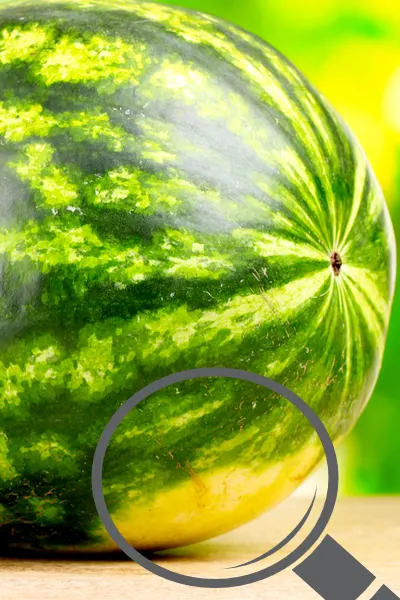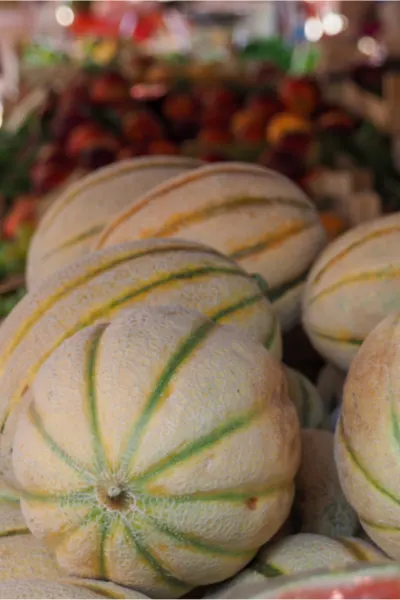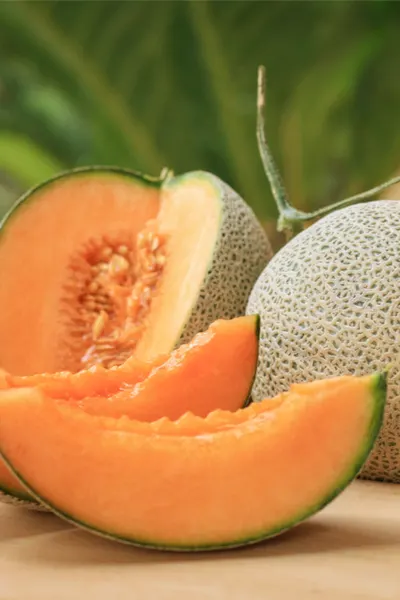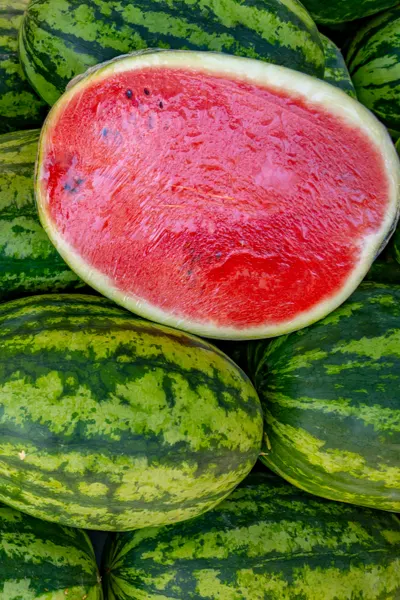Is there really a way to know if the melons growing in your garden are perfectly ripe and ready for picking?
There is nothing more devastating to a gardener than picking a melon at the wrong time. Pick too soon, and you are left with a useless, tasteless, bitter melon. And one, that unfortunately, will never ripen once removed from the vine.

However, leave that same melon in the garden a day or two too long, and it becomes an overly ripe, mushy fruit. One with a strong flavor, and an odor that is anything but pleasant.
But not to worry, there are actually a few tried and true secrets to knowing when melons are ripe and ready to pick. And we happen to cover three of the best methods in today’s article.
3 Ways To Tell Melons Are Ripe For Picking
#1 Check The Field Patch For Color
As melons grow, the bottom area that comes in direct contact with the soil develops whitish spots. These areas are field patches.
Field patches form because air and light can’t reach the bottom parts of the melon. Many gardeners will turn their melons over every week or so to avoid this patch from forming.

But unfortunately, doing so eliminates one of the easiest ways to tell if your melons are actually ripe! As it turns out, these spots are excellent indicators of knowing when melons are ripe.
Field patches will stay whitish in color as a melon grows and matures. But when they ripen, that whitish underside will turn to a creamy yellow and darker color. And when this happens, it’s time to pick!

This is also a great indicator when picking melons out from a farmers market or store. If the spots are yellowish, you are good to go. If they are on the whitish side, leave them be – or you might just be disappointed when you get them home and slice into them with your melon knife!
#2 Check The Attached Tendril – How To Know If Melons Are Ripe
When melons form on the vine, they attach by means of a curly lifeline cord called a tendril. And those tendrils are also an incredibly accurate indicator of when a melon is ripe and ready for picking.
As a melon grows and develops, the tendril is it’s source of nutrients. In a very real way, it is the melon’s umbilical cord. And the color and vitality of the tendril will tell you the status of the melon’s ripeness.

If the tendril is green and bouncy, it is still supplying nutrients and the melon is still developing.
But when it turns brown and begins to die off – no more nutrients or ripening will take place. And that means it’s time to pick!
#3 Checking For Sound – How To Tell If Melons Are Ripe
And finally, there is the age-old practice of knocking slightly on melons to tell if they are ripe. And yes, it really is a great indicator of when a melon is ready for picking. But the key is to really know what you are listening for!
Melons certainly have a distinct sound difference between when they are maturing, and when they are ripe.

As a melon is maturing and growing, a slight knock on its outer skin will be met with barely a sound. This is because the skin and flesh are “green”, and they absorb the sound.
But when melons are ripe, they will reverberate noise, resulting in a dull or hollow sound in the form of an echo. One of the best ways to help train your ear is by knocking on a few unripe melons as they grow in your garden and get used to the sound and feel.

Then, as your crop matures, keep that practice up every week. It is amazing how as they near maturity, the sound and feel of that slight knock will change. As the old saying goes, nothing beats experience!
For more on growing and harvesting melons, be sure to check out our How To Grow Watermelons article on the site. Here is to knowing when to pick your melons – and enjoying the amazing flavor of a delicious and perfectly ripe treat from the garden!
This Is My Garden is a website dedicated to spreading the love and knowledge of gardening around the world. We publish two new garden articles each week. This article may contain affiliate links.

